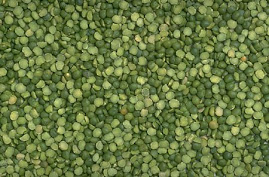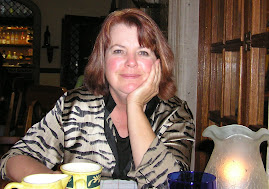Book Review
and
and
Interview with Judith Fein
by
Charmaine Coimbra
Life Is A Trip: The Transformative Magic of Travel
By Judith Fein
115 pages, Spirituality & Health Books, 2010
I love travel. And I love Judith Fein’s kind of travel—adventure, learning more about the world, and discovering fascinating people from venues other than posh hotels in popular travel destinations.
Presently, serious budget cuts have amputated far-away travel from my life. And the news hints that I’m not the only one with severed travel funds. This is one of many reasons to pick up Fein’s new book Life Is a Trip: the Transformative Magic of Travel
As with my last review, I’ve known Judie and Paul for a while, but that doesn’t mean I would automatically like their book. Truthfully, I’m blessed with writer friends who write wonderful books that easily catalogue into my tastes.
When Judie has edited my work, she encouraged me to dig deeper to find my voice. That’s a somewhat illusive challenge, but one essential to every good writer. Judie’s voice is clear, entertains and informs.
Besides her skillful adventure-verbalizing, Fein also scribes how each adventure broadened her spiritual quests. “To be honest, saying that healing interests me is a gross understatement,” Fein writes. “It is a great, driving passion in my life,” she explains in the chapter "The Sorceress’s Apprentice in Mexico," where her Central Mexico journey places her in the “the land of witches.” Magic, sorcery and self discovery keeps the pages turning.
Another chapter," The High Priest and the Camel Eater on the Holy Mountain of Blessings," voyages to the West Bank on Har Gerizim, the holy Mountain of Blessings where Fein visits the home of High Priest, Elazar B.Tsedaka. His lineage traces back to Moses. This privileged audience with the High Priest leaves Fein “a little skittish.” They discuss the Torah, healing, the soul and other matters of the spirit. Then Fein spews a cultural faux pas that could have her escorted from the room. Instead the wise man made humor of her ignorance. When the writer returns home a similar incidence occurs and she brings forth the lesson learned from the Holy Mountain of Blessings.
Forgiveness continues with her journey through modern Vietnam, she finds faith in an ancient tomb in Israel, and compassion in a Mexican prison.
The chapter that most inspired me (with the hacked travel budget) was "Happy Among the Hmong or At Home: Zen Travel." Fein and her husband, Paul Ross, are trapped in a damp, dank rental in what should have been sunny and warm San Diego, Ca. Even veteran travelers get irked—and the Fein-Ross duo was irked and bored. A notice in a local throw-away newspaper for a nearby Hmong New Year party caught their attention. “I didn’t know what to explore first: booths with native food and drink; stands laden with intricate embroidery, accessories, and clothes for sale; a lion dance; or a potluck with huge casseroles of food prepared and offered for free by Hmong women,” Fein writes about the exotic getaway that was twenty minutes away from their San Diego rental.
Sometimes life is a trip just around the corner filled with new Americans celebrating their cultural richness that is foreign to the likes of me.
At 115 pages, Life Is A Trip: The Transformative Magic of Travel
The book lands in stores Friday, July 16, 2010. Judie and Paul, however, will be in the air or traipsing across a unique part of the planet. Fortunately, I caught Judie for a few questions before her and Paul’s next most excellent adventure. Judie shared her ideas about full-time travel writing with ideas for others who play with taking this trip.
Charmaine: Was it the call to travel or the call to spiritual search that led you, as an already established Hollywood writer, to leave the stars behind and trek the world?
Judie: The Hollywood stars don't burn; they sear. And, speaking of burning, I was burned out. In Hollywood, I felt as though the soul was being sucked out of me. I had no idea what to do with the rest of my life, so I just sat still and thought about what I loved: travel. I have been traveling all my life. I lived in Europe and North Africa for 9 years. To me, travel is the Zen state. There is so much new stimulation every second that you can't be anchored in the past or the future. You have to be there, right there, in the present. And that is where spiritual connection and healing take place. So I figured out a way to make what I love be what I do for a living. My spirit called out for travel and I listened.
I have learned that if I don't listen to the call, my life is a series of disconnected actions. When I listen to the call, it all flows, like some of the great rivers of the world I have seen. I do not think you have to travel to the ends of the earth. You can cultivate a traveler's soul and mindset even if you never leave your home town.
Charmaine: It would seem that you and your husband, Paul Ross, have found the perfect scenario in that you work together, travel, write, photograph, and teach. Your bio says that your travel writings have appeared in over 90 "prominent magazines, newspapers and Internet sites." As a former freelance writer I know how much work that takes. Would you recommend this lifestyle to up and coming writers, or even to people who think they might have a great story-telling angle on their travel adventures?
Judie: There are two approaches in life: step-by-step or leaping. In this case, I would recommend the former.
First, commit to traveling deeply.
Second, when you travel soul-first, you will stumble into stories. Stories that no one else can write but you.
Third, write one story, and make it 1,000 words or less.
Fourth, try to sell it to a local paper. It can be a freebie paper, a niche paper or a paying newspaper or magazine. It doesn't matter. If that doesn't work, try to place it online. Do not even think about money. You need clips. Proof you have published. Then, when you contact an editor, you will have a published piece to show. It will build from there.
I work l6-hour days. You don't have to do that. Or you can do it. It's your life, your trips, your writing, your experience, your rhythm. If you have a mate, he or she can perhaps share your experiences by learning more about photography and videography. Then you can "work" together, even if it's not what one or both of you do for a living.
Charmaine: Did you ever think that perhaps another career, other than writing, makes more sense?
Judie: The word "career" is almost comical to me, Charmaine. This isn't a career. It's a passion. I write because I HAVE to write. The world doesn't make sense to me until I write. That's how I figure things out. And I HAVE to travel. What I read in magazines, newspapers, on websites does not express or describes the world as I encounter it on the road. So these are necessities and not just career choices. I do not live lavishly; actually, I live modestly. I don't have big desires or needs. So, thankfully, I don't have to worry about a career and a career path. Life is zipping by. I do what seems necessary, what feeds my soul.
______________________
All photos by Paul Ross













